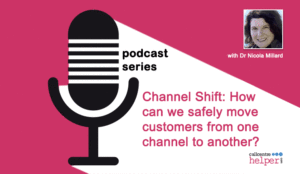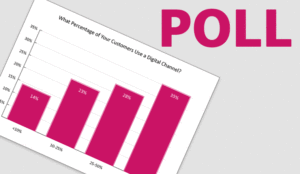Rachael Royds of CallMiner explains how customers will switch channels and ring the call centre if they are frustrated with the response from digital channels.
The CallMiner Index is a recent survey and report that identifies the sectors that have the highest churn rates in both the UK and the US. It sheds some light on the reasons why consumers switch suppliers.
One of the key observations from the reports is about consumers’ channel preferences. It discovered that consumers will use up to nine channels to contact a supplier to try and get the result they want. And although webchat, social and website are on the rise as primary contact channels, over 40% of respondents in the US and UK prefer the telephone as their primary channel.
The two dominant channels are telephone and website/chat. None of the other channels open to customers, such as app, text, social, were the number-one preferred channel for any contact reasons.
So, while these channels may have seen growth in usage in recent years, they don’t offer the real-time personal engagement consumers want when there are more complex problems to solve. As a result, they may drive more frustration with customers than success.
Customers Pick up the Phone When They Have Problems to Solve
Customer channel preferences vary by type of interaction, such as making a payment, resolving a technical issue or cancelling a service. The report shows that consumers prefer to use self-service channels like web and mobile apps to make a purchase or payment. Most importantly, the survey uncovered that frustration with self-service channels leads to frustrated calls to the call centre.
However, the CallMiner Index results show that almost half of people (43%) want organisations to provide a self-service facility to create service requests so that they can avoid a call-centre or help desk. But the telephone is still preferred for more complex problems.
Telephone preferred channel – over 40% preferred topic
- Needing information about the product/service
- Needing to resolve a technical problem with product/service
- To resolve issues with a bill
- To agree to a payment plan
- To cancel the service
In fact, the CallMiner Index shows that agents have a tough job because customers who call in to resolve problems arrive emotionally charged. In fact, two-fifths arrive annoyed, one in six arrives angry and one in seven arrives ready for an argument. The report also showed that some call centres are good at taking the heat out of the situation and send 42% of customers away satisfied. But the second highest number, 30%, leave frustrated.
Aimee Lucas, Vice President and Customer Experience Transformist at Temkin Group, said: “Our own research shows that call centre interactions that were more emotionally negative led to longer calls, more frequent transfers, and lower likelihood of the customer recommending the company.”
“It’s imperative that companies use the available tools to their advantage to identify reasons leading to negative customer experiences and churn, and coach their call centre staff on the behaviours that create more positive interactions with customers.”
How to Make a Bad Situation Better… Not Worse
The range of contact channels used means it will be important for organisations to understand which channels consumers use for which reason and then optimise services to meet these expectations. Without this understanding, self-service frustration and a negative customer experience will lead to increased customer churn.
Listening Is the Key to Customer Success
The call centre plays a pivotal role in the battle for loyalty. In fact, it’s clear that customers don’t really want to say goodbye; 78% of customers said they would be very likely to remain loyal if they had a good call centre experience. This compares favourably to the 55% of customers who said they would be very likely to switch if they had a bad call centre experience.
So, what makes the difference? The short answer is listening. But call centres are only getting that right half of the time. The number-one thing consumers want when they call a call centre is to be listened to. Almost half (46%) say that. But only 23% say they felt they had been listened to after a call. The Index report highlights that listening needs to be backed up by good empathy skills. Because almost two-thirds of people arrive with a problem to be solved, they also arrive with a range of negative emotions that make handling the call even more challenging. This is a key coaching opportunity for your managers and agents.
The top advice consumers provide on how to keep them loyal accentuates their desire to feel valued. However, the strength of feeling about what is the right thing to do is indicated by the fact that 43% more people on average provide this advice than those that switched for the same reason.
Amy Brann, a leading neuroscience expert at Synaptic Potential, explains: “Being unfairly treated triggers a response in similar networks of the brain that control physical pain. The reaction can genuinely hurt! That’s why people will go to great lengths to right wrongs.”
“In the case of suppliers, this can include burning lots of time in having a complaint handled, defecting to another company, bad mouthing the supplier online and offline, and in more extreme cases, pursuing legal avenues.”
This blog post has been re-published by kind permission of CallMiner – View the Original Article
For more information about CallMiner - visit the CallMiner Website
Call Centre Helper is not responsible for the content of these guest blog posts. The opinions expressed in this article are those of the author, and do not necessarily reflect those of Call Centre Helper.
Author: CallMiner
Published On: 12th Dec 2018 - Last modified: 2nd Jan 2020
Read more about - Guest Blogs, CallMiner






 CallMiner is the leading cloud-based customer interaction analytics solution for extracting business intelligence and improving agent performance across all contact channels.
CallMiner is the leading cloud-based customer interaction analytics solution for extracting business intelligence and improving agent performance across all contact channels. 


































